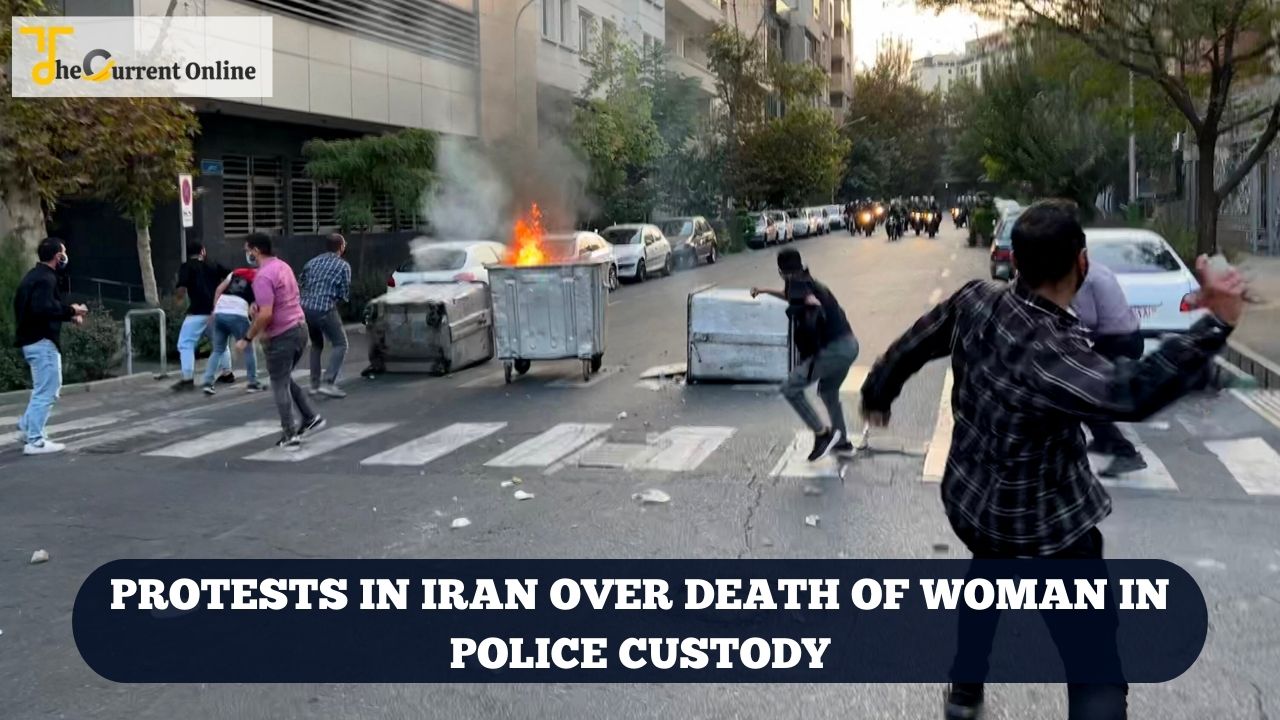Social media services have also been blocked in parts of Tehran and Kurdistan as anti-government films go viral.
Iran has turned down the internet in sections of Tehran and Kurdistan, as well as barred access to social media sites such as Instagram and WhatsApp, in an effort to quell a rising protest movement that has relied on social media to document opposition.
The protests, which began on September 16 following the murder of a 22-year-old Kurdish woman in police detention, show no signs of abating. Protesters set fire to police stations and vehicles in various places on Thursday.
This comes as anti-regime protests have spread to the internet, with footage of women burning their hijabs going viral. Under the hashtag #Mahsa Amini, other women have begun posting tearful films in which they chopped their hair in protest.
On September 16, Mahsa Amini was arrested for reportedly wearing a hijab headscarf in an “improper” manner. Activists said the woman, whose Kurdish first name is Jhina, was killed by a blow to the head, but officials rejected this and announced an investigation. Police continue to claim that she died of natural causes, but her family believes she was beaten and tortured.
According to Iranian state television, street marches had spread to 15 cities by Wednesday, with police employing tear gas and making arrests to disperse crowds of up to 1,000 people.
In southern Iran, video footage apparently from Wednesday showed rioters torching a massive portrait of General Qassem Soleimani, the revered Revolutionary Guards commander killed in a US raid in Iraq in 2020.
According to the official Irna news agency, demonstrators threw stones at security officers, set fire to police vehicles and dumpsters, and yelled anti-government slogans.
According to Iranian media, three militias “mobilized to deal with protesters” were stabbed or shot dead on Thursday in the northwestern city of Tabriz, the central city of Qazvin, and Mashhad in the country’s north-east.
According to Iranian news media, a fourth member of the security forces was killed in the southern city of Shiraz, and a demonstrator was stabbed to death in Qazvin, adding to the six protester deaths already recorded by officials.
Iran’s government has denied any role in the murders of demonstrators.
Amnesty International reported the deaths of eight persons – six men, one woman, and a child – four of them were shot at close range with metal pellets by security forces.
The protests are among the most serious in Iran since the turmoil over fuel price increases in November 2019.
“Internet shutdowns must be regarded as an extension of physical violence and repression,” said Azadeh Akbari, a cyber-surveillance researcher at the University of Twente in the Netherlands. “Social media is essential to protester mobilization, not only for coordinating gatherings but also for amplifying acts of resistance.”
https://twitter.com/yusmaneh/status/1572009218294616064
“You see a woman standing in front of anti-insurgency police without her hijab, which is extremely brave.” If a video of this is released, it is no longer simply one person doing this; ladies from all over the world are doing the same.”
“Women, life, freedom,” the cries heard during Amini’s funeral, have been repeated by protestors across the country, notably in a video showing young women burning hijabs while male protesters confront security forces. On Twitter, the video has received over 30,000 views.
In another video, an Iranian woman sings a song to lost youth while cutting her hair using household scissors, which has received over 60,000 views.
https://twitter.com/somtow1987/status/1571874522919325696
“[The films] are completely valuable,” one young Iranian Twitter user told the Guardian, adding that while the protests had not reached her hometown, she had been able to participate in opposition action online. “I am saddened that my compatriots in other regions of Iran have taken to the streets and are fighting for all of our rights against this tyranny.” And all I can do is share facts online.”
She also stated that films depicting police brutality against demonstrators were inspiring people in several areas to take action.
“It is extremely impossible for the regime to monitor the videos that are being released.” Many people do not share them on social media, but instead share them in WhatsApp groups, etc. The demonstrations are taking place in both internet and physical space.”
As public venues are carefully policed by security authorities, social media has long been one of the most important instruments for anti-regime activities. “Platforms like Instagram became the virtual street, where we could gather to demonstrate because it was impossible to do so in real life,” said Shaghayegh Norouzi, an Iranian anti-gender-based violence campaigner living in exile in Spain.
Norouzi stated that while she had been able to communicate with activists in Tehran, she was concerned about potential internet outages and what they would entail for activists’ safety.
In a statement issued on Thursday, Iran’s powerful Revolutionary Guard Corps urged the judiciary to prosecute “those who promote false news and rumors.”
Amini’s killing occurred in the midst of a government crackdown on women’s rights. On August 15, Iran’s hardline president, Ebrahim Raisi, signed a directive that enhanced the punishment for women who publish anti-hijab content online, among other things.
At the same time that the government is targeting women’s rights, Akbari claims that the government is strengthening its cyber-regime. She is concerned that continued internet outages would be exploited to aid the expansion of the Iranian national internet, which is now cut off from the rest of the world.
“This is a very hazardous idea,” she warned, “which would see the government fully disconnect Iran from the world internet in the near future.” “This would allow the government to regulate the internet in addition to policing physical space, and construct an all-encompassing control machinery.”
